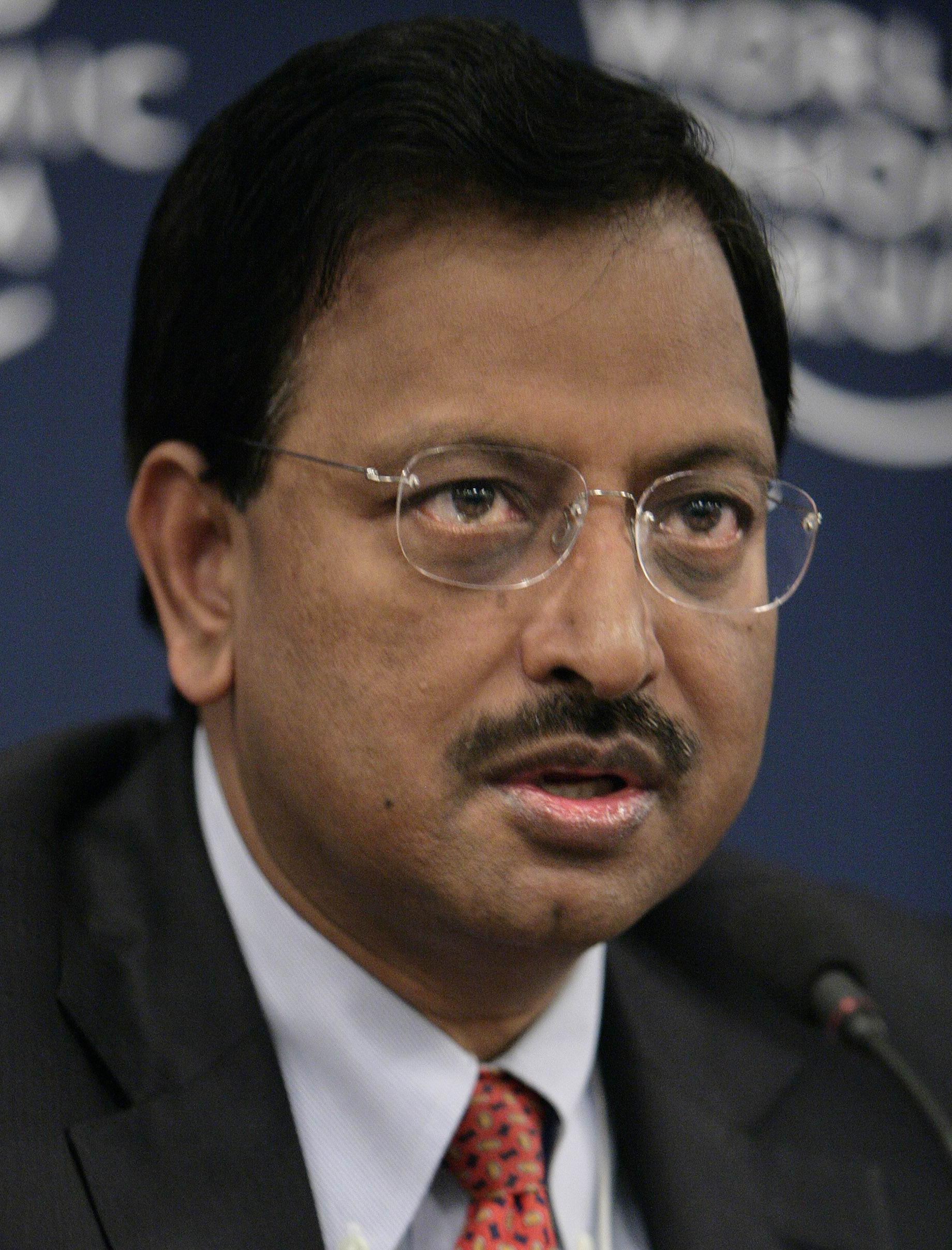
Vivek Kaul
So a Ponzi scheme is in the news again. Last time it was the emu Ponzi scheme. Before that there was Speak Asia. Now it’s the turn of Stock Guru to take investors across the county for a ride. The modus operandi as is the case with all Ponzi schemes is the same: the lure of high returns. In the end more than the frauds who ran Stock Guru it’s the investors who invested in the scheme have only themselves to blame. There greed did them in.
While one Ponzi scheme differs from another, but despite the details changing, the structure abides. Let’s first try and understand what exactly is a Ponzi scheme and why is it so called.
Charles Ponzi
Chalres Ponzi was an Italian immigrant who landed in America in 1903. Sometime in August 1919, in the process of starting an export magazine, he realised that there was money to be made through an arbitrage opportunity that existed. Ponzi sent an offer to a person in Spain requesting him to subscribe to the magazine. The subscriber agreed and sent Ponzi an international postal reply coupon. This coupon could be exchanged at the post office for American stamps which would be needed to send the magazine to the Spanish subscriber. The coupon in Spain cost the equivalent of one cent in American currency. In America when Ponzi exchanged the coupon, he got six cents worth of stamps. And this set Ponzi thinking.
What was the plan?
The plan was very simple. Ponzi could buy international postal reply coupons convert them into American stamps and sell those stamps and make money. So he would need one cent to buy an international postal reply coupon in Spain. That coupon could be exchanged for stamps worth six cents in America and those stamps could then be sold for six cents. Hence there was a clear profit of five cents, assuming there were no other charges, to be made on every one cent that was invested. The trouble of course was that Ponzi needed money to get started.
Double your money in 90 days
So Ponzi launched an investment scheme asking people to invest. He promised them that he would double their money in 90 days. Ponzi would make a profit of five cents for every one cent that he invested. That meant a profit of 500%. As far as investors were concerned he was only promising to double their money and that meant a return of 100%. Hence, on the face of it looked like a reasonably safe proposition. At its peak, the scheme had 40,000 investors who had invested around $ 15 million in the scheme.
What went wrong?
As if often the case what sounds great in theory cannot be put into practise. The idea was brilliant. But Ponzi had not taken into account the difficulties involved in dealing with various postal organizations around the world, along with other problems involved in transferring and converting currency. Also with all the money coming in Ponzi couldn’t stop himself from living an extravagant life and blowing up the money investors brought in.
But soon doubts started arising on the legitimacy of the scheme. The Boston Post newspaper ran a story on July 26, 1929, and within a few hours, angry depositors lined up at Ponzi’s door, demanding their money back. Ponzi settled the obligations of the people who had gathered. The anger subsided, but not for long. On Aug 10th, 1920, the scheme collapsed. It was revealed that Ponzi had purchased only two international postal reply coupons and was using money brought in by the new investors to pay off old investors.
So what is a Ponzi scheme?
Robert Shiller, an economist at Yale University in the United States defines Ponzi schemes as “A Ponzi Scheme involves a superficially plausible but unverifiable story about how money is made for the investors and the fraudulent creation of high returns for initial investors by giving them money invested by subsequent investors. Initial investor response to the scheme tends to be weak, but as the rounds of high returns generate excitement, the story becomes increasingly believable and exciting to investors. ( Adapted from Shiller 2003).” Hence, a Ponzi scheme is essentially a fraudulent investment scheme where money brought in by the newer investors is used to pay off the older investors. This creates an impression of a successful investment scheme. Of course as long money entering the scheme is greater than the money leaving it, all is well. The moment the situation is reversed, the scheme collapses.
This kind of financial fraud happened even before Ponzi’s name came to be attached to it. And it continues to happen more than ninety years after Charles Ponzi ran his scam.
Any Ponzi Scheme will differ from another Ponzi Scheme. But if one may borrow a French phrase, Plus Ca Change, Plus C’est La Meme Chose, the more things change, the more they remain the same. The details might change from scheme to scheme, but the structure abides. Here are some characteristics of Ponzi schemes.
The instrument in which the scheme will invest appears to be a genuine investment opportunity but at the same time it is obscure enough, to prevent any scrutiny by the investors.
In case of the emu Ponzi scheme an investor was supposed to rear emus and then sell their meat, oil etc. In order to become a member of Speak Asia one had to invest Rs 11,000. This investment was for subscribing to the electronic magazine issued by the company called “Surveys Today”.
This also allowed the member to participate in two online surveys every week and make Rs 500 per survey or Rs 1000 per week. This when converted into a yearly number came to Rs 52,000 (Rs 1000 x 52). So an investment of Rs 11,000 ensured that Rs 52,000 was made through surveys, which meant a return of 373% in one year.
And this was basically the main selling point of the scheme. So the business model of the company was pretty vague. The legal advisor of the company Ashok Saraogi said at a press conference “The company is not selling any surveys to panellists but e-zines (electronic magazines) to its subscribers. Surveys are offered as additional benefit and can be withdrawn anytime if the company’s contract with clients comes to an end.”
Stock Guru also worked along these lines. The company claimed to be making money by investing in stocks and had this to advise to its customers: “We advise our clients to buy shares at a low price and sell them at a higher price. Selecting the right share at the right price and entering the capital market at the right time is an art. We help all our clients to make huge profits by investing in good shares for very short/short/medium/long term depending upon the client’s requirements.” Very sane advise when it comes to investing in the stock market but nothing specific about how the company plans to help its clients make a huge profit.
Most of the Ponzi Schemes start with an apparently legitimate or legal purpose.
Let’s take a look at some of the Ponzi schemes of yore. Hometrade started off as a broker of government securities, Nidhis were mutually beneficial companies and Anubhav Plantations was a plantations company. They used their apparently legitimate or legal purpose as a façade to run a Ponzi Scheme. Same stands true for the present day Ponzi schemes. Speak Asia was in the magazine and survey business. Emu Ponzi schemes were in the business of rearing and selling emus. And Stock Guru helped investors make money by investing in stocks.
The most important part of a Ponzi scheme is assuring the investor that their investment is safe.
This is where the meeting of initial obligations becomes very important. Early investors become the most important part of the scheme and spread it through word of mouth, so that more investors invest in the scheme and help keep it going. Ironically enough, in many cases it is their own money that is being returned to them. Let us say an investor invests Rs.100 in a scheme that promises 20% return in 60 days. So Rs.20/- can be paid out of investor’s own money once every two months up to ten months. The Ponzi scheme can keep going by essentially returning the investor his own money. Speak Asia did this by returning around Rs 250 crore to the investors from the Rs 2000 crore it had managed to collect. This gave the scheme a greater legitimacy.
Stock Guru also worked along similar lines. As an article in the Money Life magazine pointed out “You pay Rs10,000 as investment and Rs1,000 as registration fees. There is no limit on the maximum amount one can invest. Stockguruindia.com offered a return of 20% per month for up to six months and the principal amount invested is returned in the next six months. It also gave post-dated cheques of the principal and a promissory note as security.”
As a story in The Times of India points out “People invested between Rs 10,000 and Rs 60 lakh at one go in Stock Guru India as Ulhas promised to double their capital…He (i.e.Ulhas Khaire who ran the scam) also returned money to some investors to win their trust so that they would recommend Stock Guru to others,” said an officer. In fact this initial lot of investors become brand ambassadors and passionate advocates of the scheme. When this writer wrote about Speak Asia being a Ponzi scheme he got stinkers from a lot of people who had invested their money in Speak Asia at the very beginning and made good returns.
The rate of return promised is high and is fixed at the time the investor enters the scheme. So the investor knows in advance what return he can expect from the scheme. The promised returns were substantially higher compared to other investment avenues available in the market at that point of time. The rate of return was also fixed in advance. So there was no volatility in returns as is in other forms of investment. This twin combination of high and fixed returns helps in attracting more and more investors into the scheme.
In Speak Asia the investor knew that he would get paid Rs 1000 per week for conducting surveys. And by the end of the year he would earn Rs 52,000 on an initial investment of Rs 11,000.
In case of Stock Guru a minimum of Rs 10,000 was to made as an investment. And Rs 1,000 was the registration charge. The company promised a return of 20% per month against the investment for the first six months. For a person investing Rs 10,000 that would mean a return of Rs 2,000 per month or Rs 12,000 after the first six months. The principal amount of Rs 10,000 would be returned over the next six months. Hence on an investment of Rs 11,000, a profit of Rs 12,000 was being made in a very short period of time. These were fantastic returns.
Brand building is an inherent part of a Ponzi Scheme.
MMM, a Russian Ponzi scheme marketed itself very aggressively. In the 1994 football World cup, the Russian soccer team was sponsored by MMM. MMM advertisements ran extensively on state television and became very famous in Russia. Hometrade also used the mass media to build a brand image for itself. It launched a high decibel advertising campaign featuring Sachin Tendulkar, Hrithik Roshan and Shahrukh Khan. When the company collapsed, the celebrity endorsers washed their hands off the saying that they did not know what the business of Hometrade was. Anubhav Plantations also ran a huge advertising campaign. Film stars also advocated investing in the emu Ponzi schemes.
Speak Asia ran a huge ad campaign. The irony was it advertised extensively in newspapers which dealt with personal finance. Stock Guru did its level of brand building as well. As a report in the Times of India points out “ Ulhas Prabhakar Khaire andRaksha Urs, masterminds of the multi-crore Stock Guru fraud, would organize their promotional events in Macau, Malaysia, Mauritius and several other countries, taking only a few premium investors on expenses-paid trips, say Delhi Police sources. The events were reportedly organised regularly in five-star hotels, and Ulhas made all the arrangements, including booking flights for investors and celebrities. Ulhas is learnt to have named two Bollywood celebrities he invited to his promotional events.”
All these things lead to people investing in these schemes. The attraction of easy wealth is something that investors cannot resist. Ponzi schemes offer huge returns in a short period of time vis a vis other investments available in the market at that point of time. With good advertising and stories of previous investors who made a killing by investing in the scheme, investors get caught in the euphoria that is generated and hand over their hard earned money to such schemes going against their common sense. Greed also results when investors see people they know make money through the Ponzi scheme. As economic historian Charles Kindleberger once wrote “ There is nothing so disturbing to one’s well being and judgment as to see a friend get rich.”
Given this, even though a lot of questions can be asked they are not asked. Ponzi schemes have not been eliminated. This is sad because for the economy as whole, they are undesirable. The world has not learned from its experience. “Mundus vult decipi-ergo decipitaur-The world wants to be deceived , let it therefore be deceived ”. (Winkler 1933 as quoted in Kindlberger 2000).
All Ponzi schemes collapse in the end once the money leaving the scheme becomes greater than the money entering it. Stock Guru was no different.
To conclude, any investment scheme promising more than 15% return a year has to be a very risky proposition. It may not always be a Ponzi scheme, but the chances are that it is more often than not.
The article originally appeared on www.firstpost.com on November 15, 2012.
(Vivek Kaul is a writer. He can be reached at [email protected])


